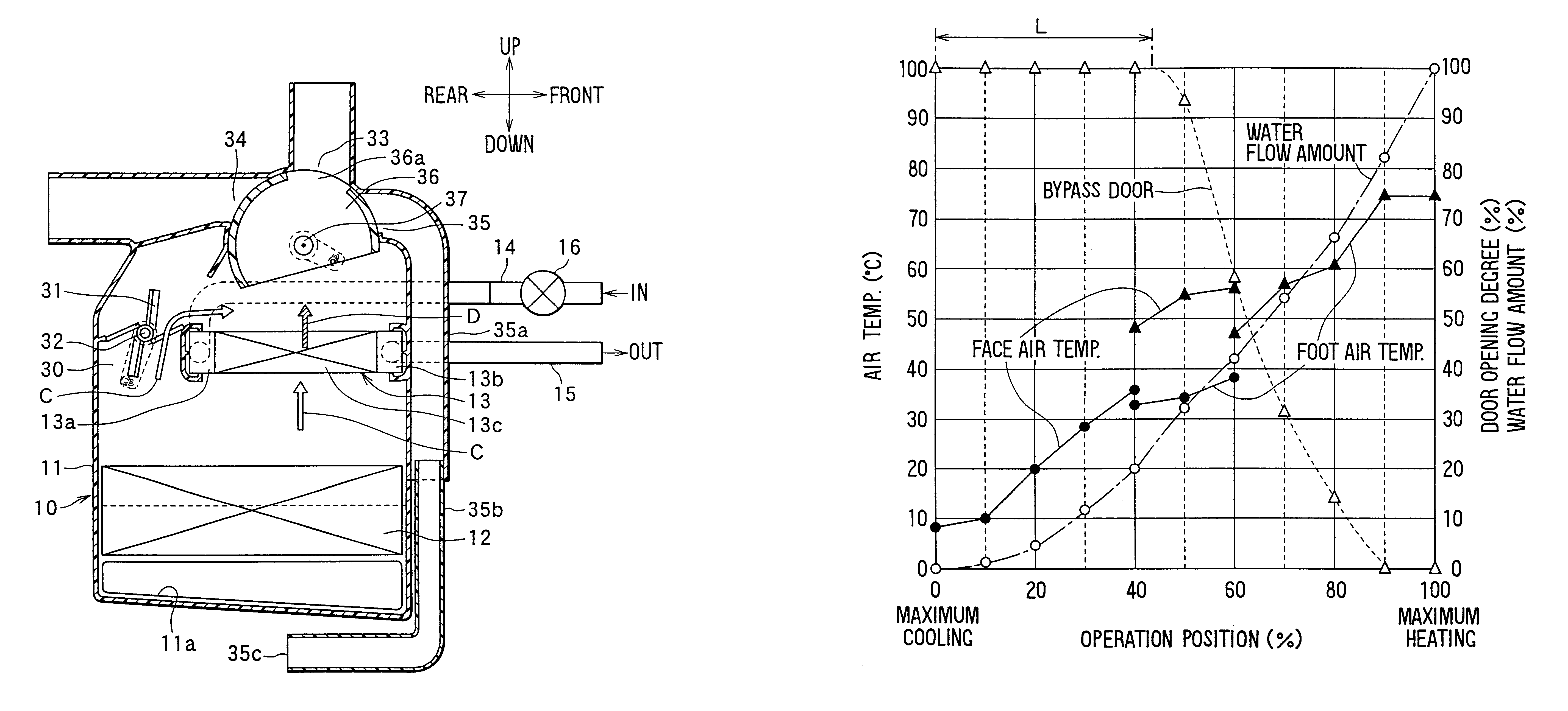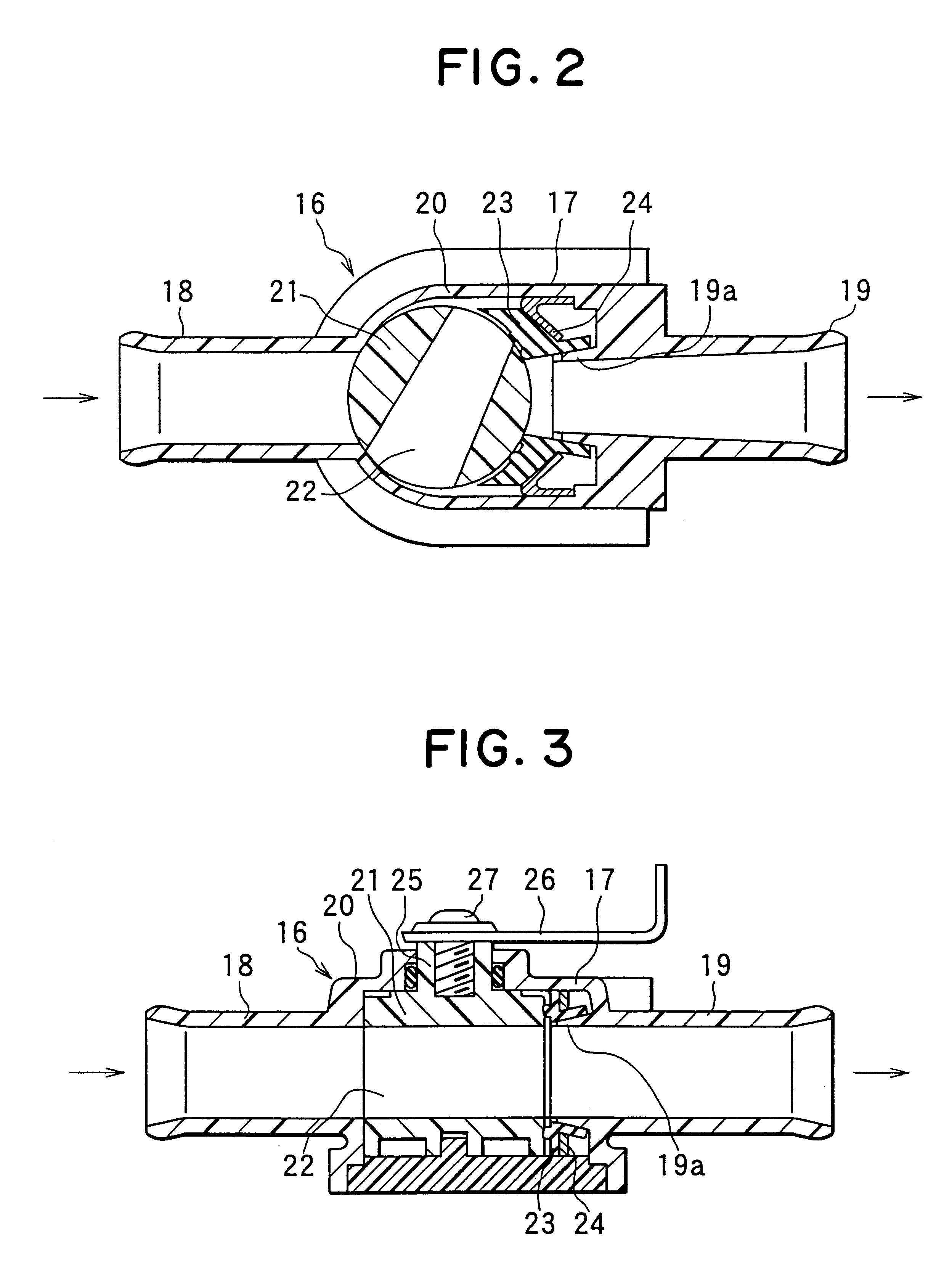Air conditioning apparatus with air-temperature adjustment
a technology of air-temperature adjustment and air-conditioning equipment, which is applied in the direction of temperatue control, process and machine control, instruments, etc., can solve the problems of delay in temperature-changing response delay for users, inability to immediately reduce the temperature of blown-air, and large delay in the actual temperature of air blown into the passenger compartmen
- Summary
- Abstract
- Description
- Claims
- Application Information
AI Technical Summary
Benefits of technology
Problems solved by technology
Method used
Image
Examples
case 11
The air conditioning case 11 is made of resin which has an elasticity to some degree and is superior in a strength, such as polypropylene, and is composed of plural division case portions. Plural division case portions of the air conditioning case 11 are integrally connected by a fastening unit such as a metal spring clip and a screw, after the evaporator 12, the heater core 13 and components such as a door described later are accommodated therein, to construct the air conditioning unit 10.
The evaporator 12 is disposed within the air conditioning case 11 at a vehicle front side. The evaporator 12 is disposed in the air conditioning case 11 to cross an entire air passage within the air conditioning case 11. In a refrigerant cycle of the vehicle air-conditioning apparatus, refrigerant of the refrigerant cycle flows into the evaporator 12, and absorbs an evaporation-latent heat from air passing through the evaporator 12, so that air passing through the evaporator 12 is cooled.
An air in...
first embodiment
The heater core 13 of the first embodiment includes a hot-water inlet tank 13a disposed at a lower side, a hot-water outlet tank 13b disposed at an upper side, and a heat-exchanging core portion 13c between the hot-water inlet tank 13a and the hot-water outlet tank 13b. The heat-exchanging core portion 13 are integrally brazed after laminating plural flat tubes each of which is formed by connecting both flat metal plates and the plural corrugated fins.
Thus, the heater core 13 is a one-way flow type in which hot water from the hot water inlet tank 13a flows upwardly through the entire flat tubes from below. A hot water inlet pipe 14 is connected to the hot-water inlet tank 13a, and a hot water outlet pipe 15 is connected to the hot-water outlet tank 13b. Therefore, hot water circulates between a vehicle engine (not shown) and the heater core 13 through the hot water inlet and outlet pipes 14, 15.
Further, a hot water valve 16 is disposed in the hot-water inlet pipe 14. The hot water v...
second embodiment
FIG. 9 shows the operatively linked characteristics of the hot water valve 16 and the cool air bypass door 31 according to the The horizontal axis in FIG. 9 indicates the operation position of the temperature-adjustment operation member 29. In the horizontal axis of FIG. 9, the maximum cooling position (the lowest-temperature position) where the hot water valve 16 is fully closed is set at 0%, and the maximum heating position (i.e., highest temperature position) where the hot water valve 16 is fully opened is set at 100%, and the operation position of the temperature-adjustment operation member 29 is indicated by percentages. Further, in the vertical axis of FIG. 9, both of the flow amount of hot water adjusted by the hot water valve 16 and the opening degree of the cool air bypass door 31 are indicated by percentages, and the temperature of air blown into the passenger compartment, adjusted by the hot water valve 16 and the cool air bypass door 31, is indicated.
In the second embod...
PUM
 Login to View More
Login to View More Abstract
Description
Claims
Application Information
 Login to View More
Login to View More - R&D
- Intellectual Property
- Life Sciences
- Materials
- Tech Scout
- Unparalleled Data Quality
- Higher Quality Content
- 60% Fewer Hallucinations
Browse by: Latest US Patents, China's latest patents, Technical Efficacy Thesaurus, Application Domain, Technology Topic, Popular Technical Reports.
© 2025 PatSnap. All rights reserved.Legal|Privacy policy|Modern Slavery Act Transparency Statement|Sitemap|About US| Contact US: help@patsnap.com



